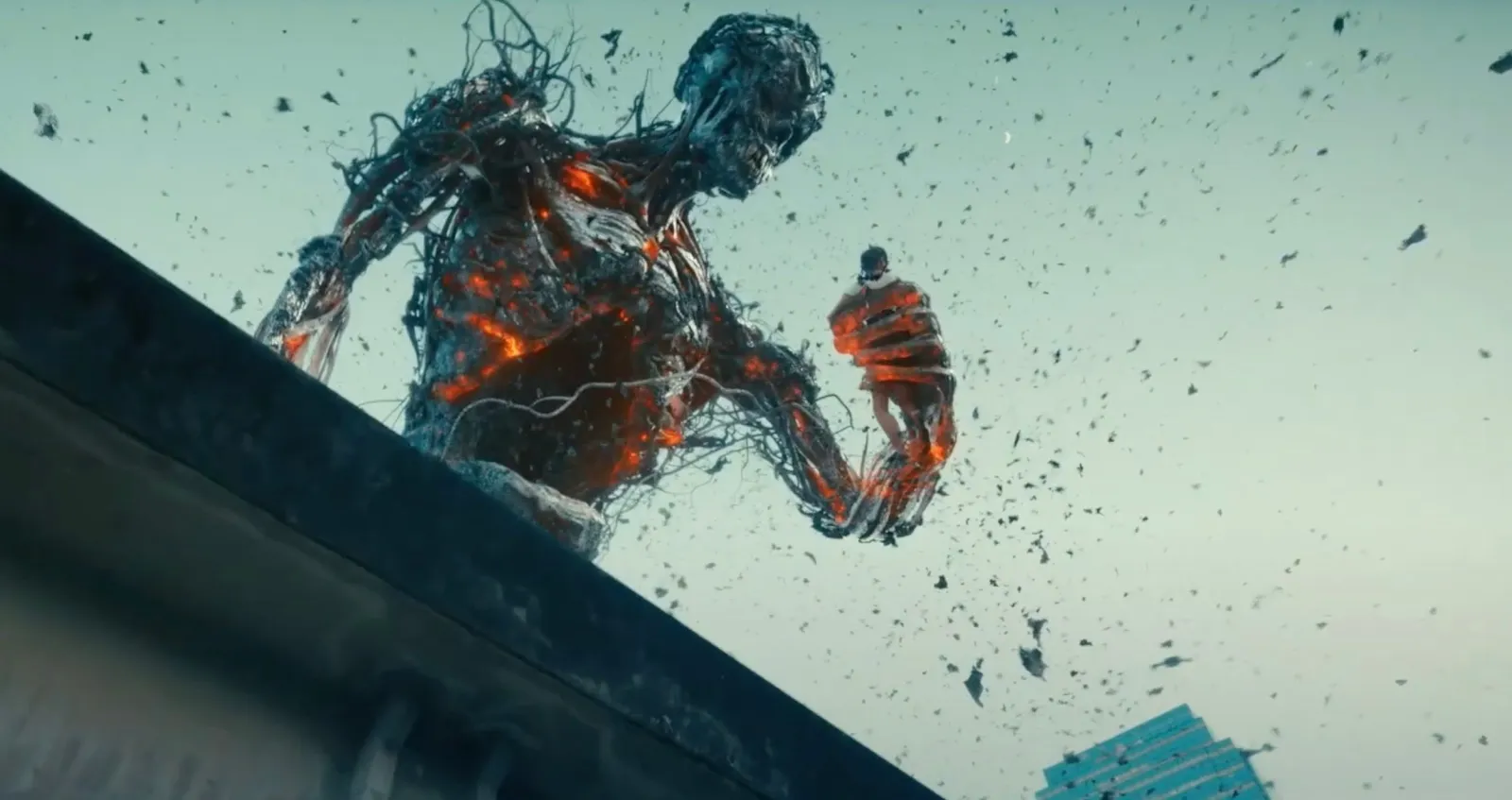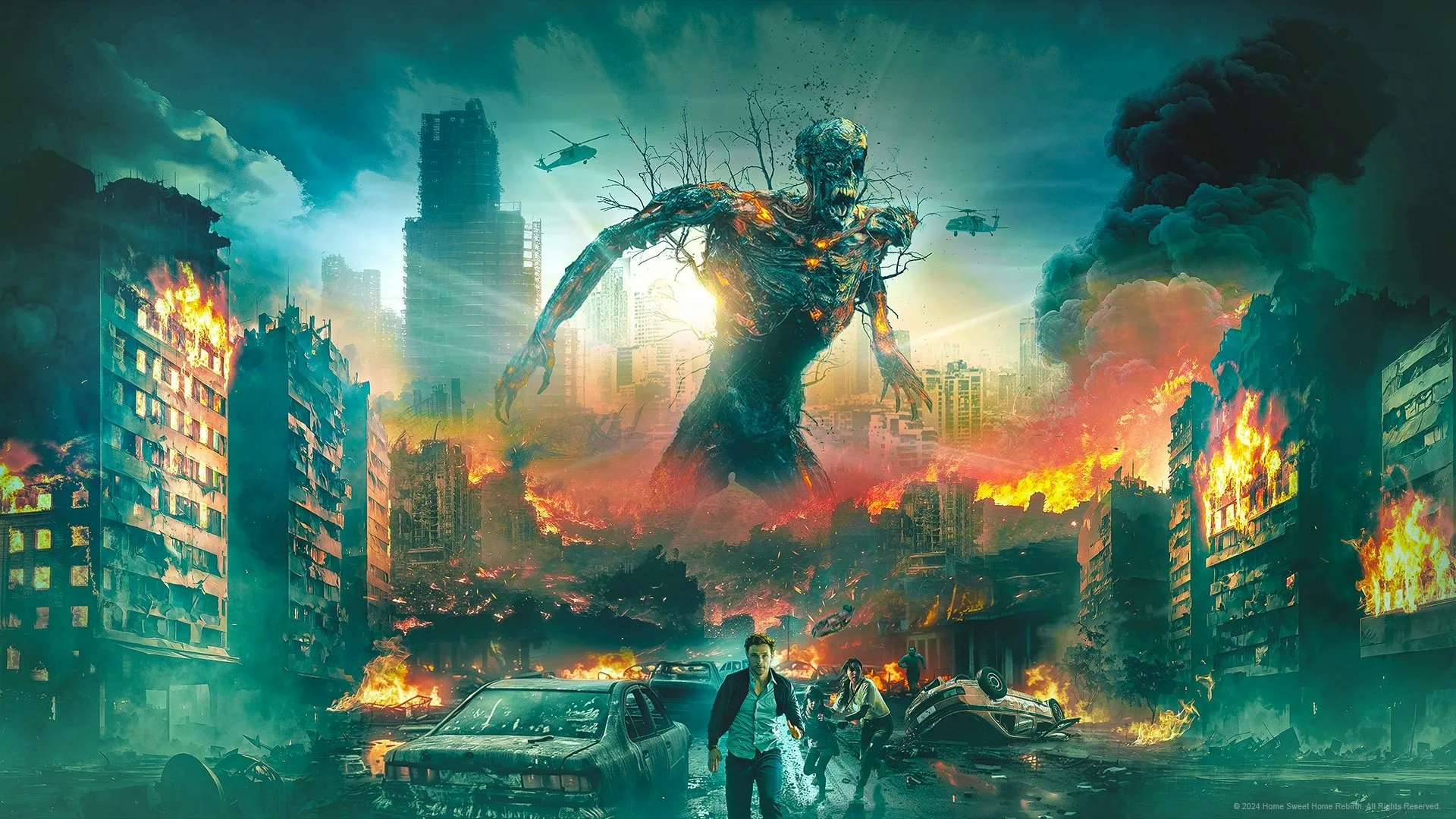“Home Sweet Home: Rebirth” thrusts viewers into a supernatural action scenario, tinged with the DNA of horror. The narrative introduces Jake (William Moseley), an American police officer, seeking respite in Bangkok with his wife Prang (Urassaya Sperbund) and their young daughter, Loo.
Initial scenes paint a familiar picture of a Western family immersed in the sights of Thailand, a common cinematic entry point for tales of cultural encounter. This idyllic surface is violently shattered when a routine visit to a shopping mall becomes the epicenter of a horrific event involving a disturbed individual, Mek.
This incident is not merely a human tragedy; it acts as a key, unlocking a conduit for demonic forces to spill into the Thai capital. The personal stakes are immediately established as the ensuing pandemonium separates Jake from his family, forcing them onto divergent and perilous paths in a city rapidly succumbing to an otherworldly siege.
Navigating Otherworldly Realms and Earthly Despair
The fabric of Bangkok quickly unravels as a demonic contagion spreads, transforming a significant part of its populace into aggressive, possessed beings. The city morphs into a treacherous landscape, a hunting ground where survival is paramount.
Prang, with Loo in tow, embarks on a desperate flight through this urban nightmare, their journey including a harrowing escape attempt on a municipal bus, a stark depiction of civilian resourcefulness against an overwhelming supernatural assault. Simultaneously, Jake is violently pulled from this reality into “The Hindrance,” a dimension presented as a purgatorial or hellish space.
Within this bleak, alternate world, he encounters Chen, a Novice Monk, who becomes an indispensable guide and ally in a burgeoning ancient war against the encroaching evil. The demonic entities themselves are largely depicted through a lens of generalized horror imagery – insectoid creatures, winged demons, and a colossal figure of fire and digital rendering.
Their actions often echo the relentless, swarming nature seen in zombie apocalypses, a stylistic choice that opts for broader recognition over deep dives into specific Thai folkloric fiends. The film attempts a syncretic approach to its supernatural lore, weaving together threads that hint at Buddhist concepts, paganistic ideas, and archetypes familiar to global audiences of Hollywood horror.
The Universal Pulse of Action Amidst Ancient Terrors
“Home Sweet Home: Rebirth” decidedly channels its energy into action, frequently prioritizing kinetic spectacle over the sustained cultivation of suspense or deep-seated horror. The screen is filled with shootouts, visceral physical combat, large-scale scenes of demonic destruction, and frantic chases.
This commitment to high-octane engagement dictates a brisk, sometimes frenetic, pacing; the narrative often propels itself rapidly from one elaborate set-piece to the next, allowing little space for quiet dread to accumulate. Visually, the film employs digital effects to bring its demonic hordes and supernatural occurrences to life.
The quality of this CGI work presents a mixed experience; at times, it effectively conveys the scale of the otherworldly threat, while in other moments, its artifice may be apparent. The design of the larger demonic antagonists, like the towering fire entity, aims for imposing spectacle.
Fight choreography shows flashes of inspiration, with certain sequences echoing the dynamic close-quarters combat popularized in contemporary international action cinema. Bangkok itself is presented through a lens that balances recognizable cityscapes with the chaos of its demonic transformation, with cinematographic choices like drone shots and slow-motion employed to amplify the impact of key action moments. The resulting atmosphere is one charged more with adrenaline and urgent peril than with insidious, creeping fear.
Echoes of Myth in a Modern Cataclysm
The narrative architecture of “Home Sweet Home: Rebirth” presents a straightforward, if sometimes tangled, path through its supernatural conflict. The clarity of its exposition regarding the rules of its spiritual world and the backstory of the demonic invasion can occasionally become dense, leaning on well-worn cinematic shorthand such as the “chosen one” archetype to propel Jake’s journey.
Character development is primarily forged in the crucible of crisis. Jake, the American outsider, is forced to adapt and fight within an ancient, spiritual conflict that transcends his understanding, while Prang demonstrates significant resilience and agency in protecting her child on the streets of a possessed Bangkok. Urassaya Sperbund’s portrayal of Prang offers a notable anchor of conviction amidst the chaos.
The film’s thematic exploration of its blended mythologies—its Thai setting interwoven with more universal demonic tropes—often serves as a backdrop for the unfolding action rather than a deep interrogation of cultural or spiritual ideas. While moments of dialogue can feel purely functional in their attempt to convey complex lore, the visual storytelling of parallel struggles—Jake in The Hindrance, Prang in Bangkok—creates a dynamic of separated fates striving for reunion.
The apocalyptic finale aims for a grand scale, seeking to provide a suitably cataclysmic resolution to the demonic incursion. The film offers an energetic, if uneven, ride through a globalized vision of ancient terrors unleashed upon the modern world.
Home Sweet Home: Rebirth was released in the United States on April 11, 2025, by Vertical and is available for streaming on platforms such as Fandango at Home.
Full Credits
Directors: Alexander Kiesl, Steffen Hacker
Producers and Executive Producers: Dean Altit, Pakin Maliwan; Executive Producers: Tanat Juwiwat, Saroot Tubloy, Richard Alan Reid, Kia Jam
Cast: William Moseley, Michele Morrone, Urassaya Sperbund, Alexander Lee, Akeira Hadden, Ting Sue, Tia Taveepanichpan, Dominik Zoeker, Bloom Varin, Tonon Wongboon
Director of Photography (Cinematographer): Maher Maleh
Editor: Sebastian Wild
Composer: Tao Liu
The Review
Home Sweet Home: Rebirth
"Home Sweet Home: Rebirth" offers a frenetic collision of worlds, transplanting an American family into a Bangkok besieged by generic demons. While Urassaya Sperbund delivers a strong performance and some action sequences inject energy, the film's attempt to meld Thai spiritual elements with global horror tropes results in a visually active but thematically shallow experience. It's a spirited, if somewhat muddled, journey into a digital-age apocalypse that struggles to fully realize the potential of its cross-cultural premise, opting for broad spectacle over nuanced terror or profound mythological exploration.
PROS
- Energetic action sequences.
- Committed performance from Urassaya Sperbund as Prang.
- Intriguing initial premise of a supernatural crisis in Bangkok.
- Ambitious visual scale in certain moments.
CONS
- Often generic and culturally unspecific demon designs.
- Mythology feels like a superficial blend rather than deeply explored.
- Narrative can be convoluted and relies on familiar tropes.
- Visual effects quality is inconsistent.
- Dialogue sometimes feels clunky and exposition-heavy.


















































